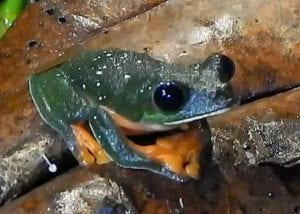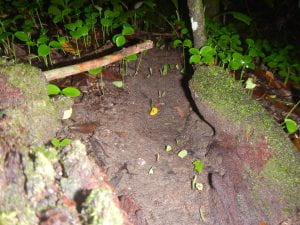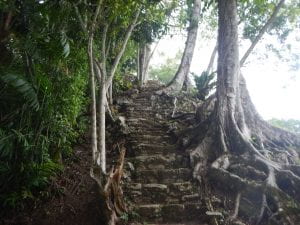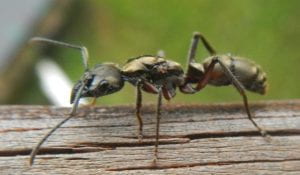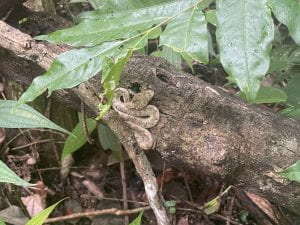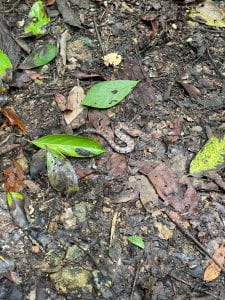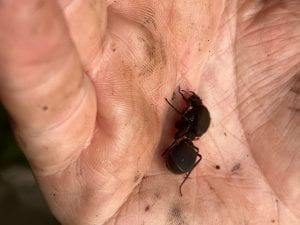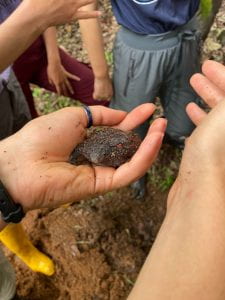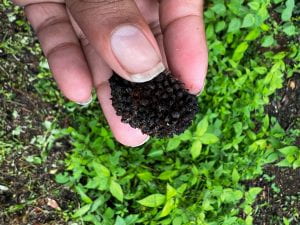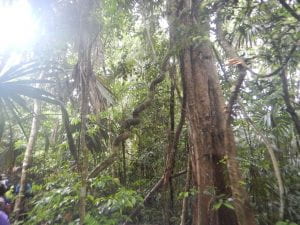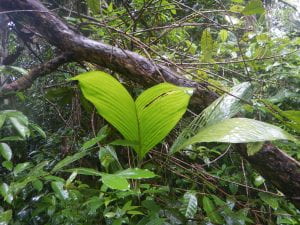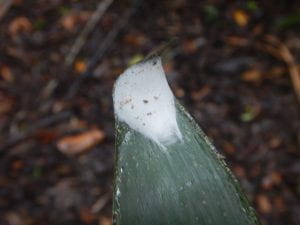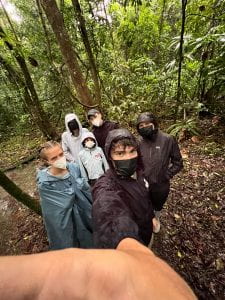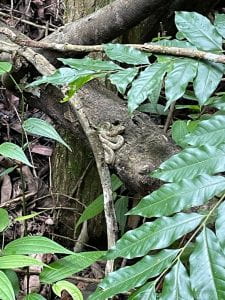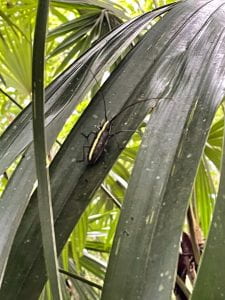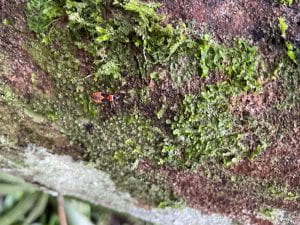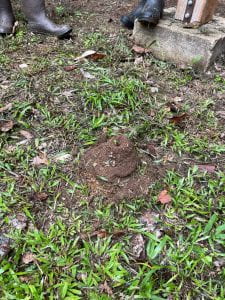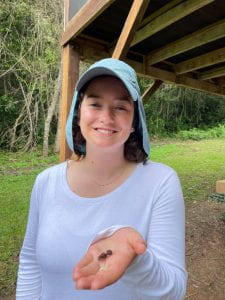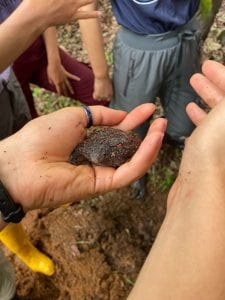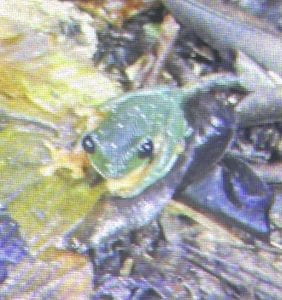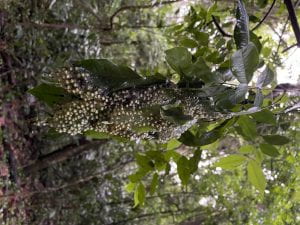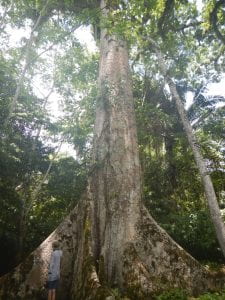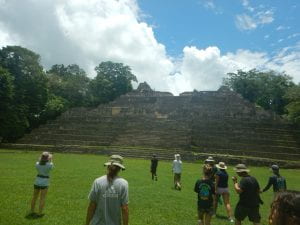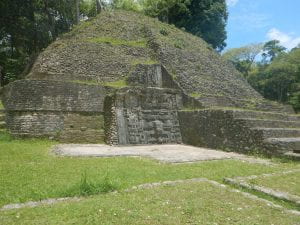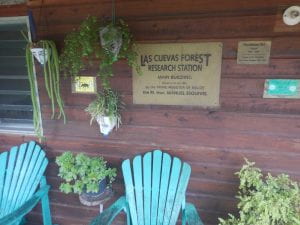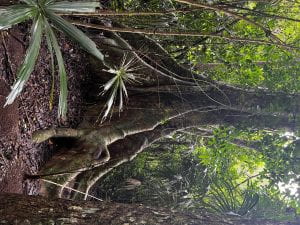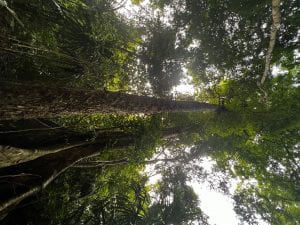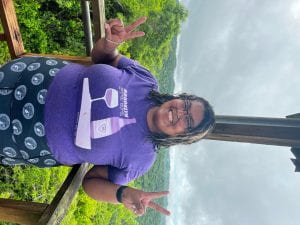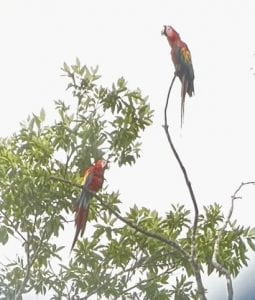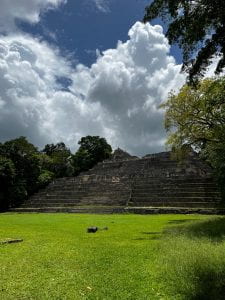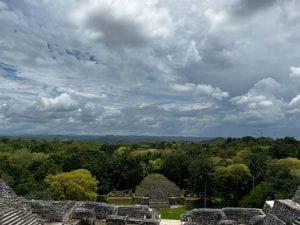Today we started a project exploring nutrient limitations in the forest canopy and on the forest floor. We are investigating this by peeing in tubes and strapping them to different trees (I promise there is real science behind this). We are going back out on the trails tomorrow morning to collect the pee tubes and count the number of arthropods we find in them.
While we were walking the trail to place our pee traps, Phoenix spotted a jumping pit viper in the middle of the trail and then Rusty spotted an eyelash viper on a log off the trail. The eyelash viper was especially exciting, because Dr. Solomon said he had never seen one in his twelve years of visiting Chiquibul. Later on down the trail, Ava spotted what they described as a “Spiky moth” on the trunk of a tree, but when they said it was dead, I suggested that it was actually infected with the Ophiocordyceps fungus, which turns arthropods into ‘zombies.’ Almost immediately after that, I spotted another, more decomposed Ophiocordyceps moth on a leaf on the forest floor. I still really want to see an ant infected with Cordyceps, but the moth was still really cool.
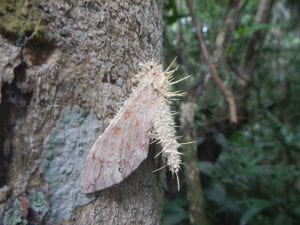
After lunch we searched nearby the research station for some leafcutter ant (Atta cephalotes) nests of differing ages to dig up and compare. First, we found a young (~1 year) ant nest with a single entrance ‘chimney’ or ‘turret’, and we started digging about a foot away to try to break into the underground fungus chambers. Dr. Solomon told us that the very young nests do not have big soldier ants for defense and that the individual worker ants are shinier than the ants in older colonies. After a few rounds of everyone taking turns digging into the nest, we finally broke into the fungus chamber, which looked like a whitish gray spongey honeycomb. Dr. Solomon started scooping out the fungus to look for the queen, and when we finally found her, I got to hold her and have my picture taken with her :’) When we tried digging up a slightly older nest, we kept digging and digging, but no ants were coming out, which made us think that the nest was abandoned. When I got my turn with the shovel, I dug down super deep and pried up a huge chunk of soil, and I exposed a Mexican Burrowing Toad (which we had learned about literally just yesterday)! We gently picked it up and it was SO gelatinous, we couldn’t believe that it could burrow into the hard packed clayey soils, but it had strong hind legs that it uses to burrow backwards!
After dinner, we went on an optional night hike to the frog pond, which was unforgettable. At the frog pond, we saw not one, but TWO endangered Morelet’s Tree Frogs. We got quite a few good pics and vids, and they even jumped and crawled on a few of us. One jumped onto my hand!!! A critically endangered species reached out and touched me! We also saw not one, two, three or four, but FIVE arboreal snakes in the branches and canopy above the frog pond hunting for the gelatinous globs of tree frog eggs plastered onto the underside of leaves. At least one was successful in getting a mouthful of frog eggs, but hopefully there are still enough for a new generation of frogs.

